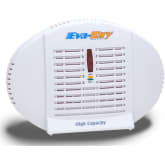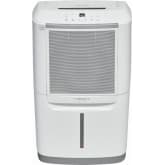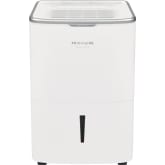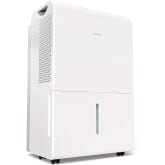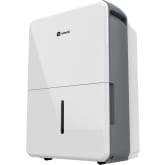The Rundown
- Our favorite dehumidifiers are the Eva-Dry E-500 and the Frigidaire Gallery FGAC5044W1.
- The Eva-Dry E-500 is compact and uses desiccant silica beads for passive moisture absorption, ideal for small, constant moisture removal in tight spaces like RVs.
- The Frigidaire Gallery FGAC5044W1 offers smart connectivity, an easy-to-empty reservoir, and a sturdy filter, making it convenient for managing humidity remotely.
A dehumidifier's primary task is just what it sounds like: to remove moisture and humidity from the air. It's the opposite of a humidifier, which adds excess moisture to the air. Dehumidifiers aren't just great at taking the edge off hot, humid summer days. They're also excellent at combating mildew in areas with a persistently muggy climate, or after a major leak or flood.
Keeping your home's humidity levels under control can reduce the likelihood of mold growth, bugs that thrive in moist climates, and odors in general. What’s even better is that many dehumidifiers fit well into a small room.
If you’re open to looking for the best dehumidifiers beyond just Amazon, we also have a list of those that you can take advantage of looking at as well.
To help you find the best dehumidifier, we explored a variety of options available online. Based on our research, these are some of the best Amazon dehumidifiers you can get right now.
What You Should Know About Dehumidifiers
An electric dehumidifier works in a very similar fashion to an air conditioner. Inside of a dehumidifier, you'll find a number of components: an evaporator, a compressor, and a condenser. As the warm, humid air in your home passes over the winding, tubular surface of the evaporator, refrigerant chemicals inside the tubes absorb the heat in the air.
As a result, the air's temperature cools. As the air chills, the moisture in the air transforms into liquid water, which collects on the evaporator. This water drips off of the evaporator and is collected into a container to be disposed of.
As it absorbs the heat from the outside air, the refrigerant inside of the evaporator is heated. This increase in temperature transforms from a liquid to a gas. The vaporized refrigerant is sucked into the dehumidifier's compressor.
Here, the refrigerant is, well, compressed, raising both the amount of pressure it's under and its temperature. The resulting hot, pressurized gas is then forced into the condenser, where it's transformed back into a liquid state as the heat in the refrigerant is radiated away.
Unlike the condenser on an air conditioner, which is designed to channel warm air out of your home, the condenser on a dehumidifier keeps the heat inside of your home. Once the liquid refrigerant has been cooled in the condenser, it's recirculated back into the evaporator, where the whole process starts all over again.
Not all dehumidifiers use this method to pull high humidity out of the environment around them. Some use silica gel, formed into beads, to collect moisture from the air. Moisture is absorbed into pores on the surface of the silica, leaving the air that carries the moisture dry as a bone.
There are limits to how much moisture silica gel can absorb. Once the gel has reached its limits, heating it at a high temperature, either in an oven or through the use of an electric heating element, will dry the moisture out of it, leaving the material ready to take on more water.
More Articles You Might Enjoy


